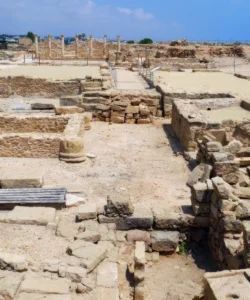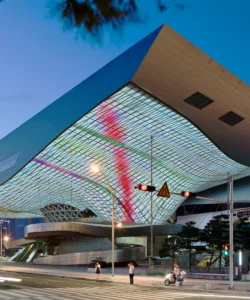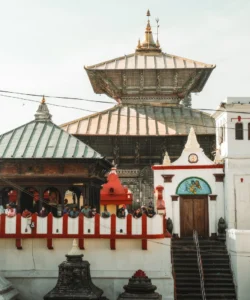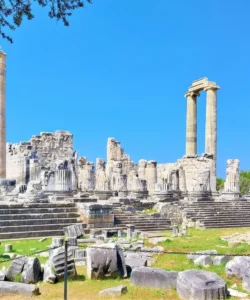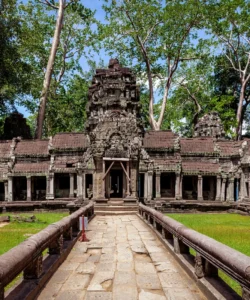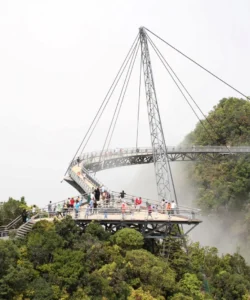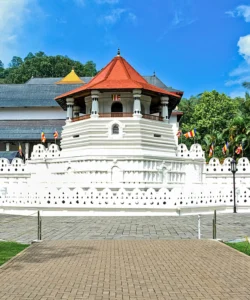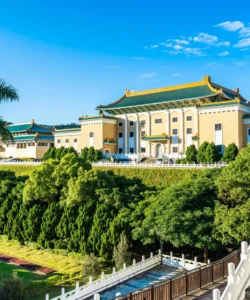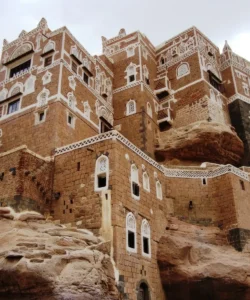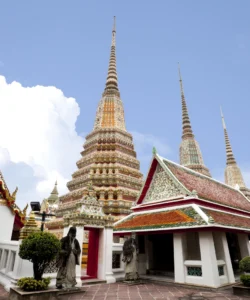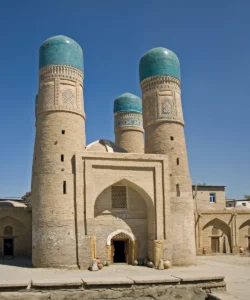The Tokyo Imperial Palace is a significant landmark located at 1-1 Chiyoda, Chiyoda City, Tokyo 100-8111, Japan. It serves as the primary residence of the Emperor of Japan.
![]()
How to get there:
The palace is centrally located in Tokyo and is easily accessible by public transport:
- By Subway:
- Nijubashimae Station (Chiyoda Line, Exit 6): 10-15 minute walk to various gates (Kikyo-mon Gate, Sakashita-mon Gate).
- Otemachi Station (Mita Line, Exit D2; Tozai, Chiyoda, Hanzomon, Mita Metro lines): 5-15 minute walk to various gates (Ote-mon Gate, Kikyo-mon Gate, Sakashita-mon Gate).
- Takebashi Station (Tozai Line, Exit 1a): 5-minute walk to Hirakawa-mon Gate or Kita-hanebashi-mon Gate.
- By JR Line:
- Tokyo Station (Marunouchi Central Exit): 15-20 minute walk to various gates.
About the Wonder and Architecture:
The Tokyo Imperial Palace stands on the former grounds of Edo Castle, the seat of the Tokugawa shogun. The current residence, completed in 1993, was designed by the renowned Japanese architect Shōzō Uchii. While the original palace was destroyed during World War II, it was rebuilt in a similar style. The palace complex is a blend of traditional Japanese design and modern elements, surrounded by moats and massive stone walls, enhancing its majestic presence.
Key architectural features and areas include:
- Seiden (Main Building): The primary structure of the palace.
- Six Wings: Homei-Den, Rensui, Chowa-Den, Chigusa-no-Ma, Chidori-no-Ma, and others, covering a total floor space of 24,175 square meters.
- Nijubashi Bridge: An iconic double-arched stone bridge that serves as the main entrance to the palace grounds and is a symbol of the Japanese imperial family.
- Otemon Gate: The main entrance to the Imperial Palace East Gardens, a massive gate with traditional wooden beams and a stone foundation.
- Fushimi Yagura: A remaining watchtower from the original Edo Castle, offering a glimpse into the castle’s past military significance.
- East Gardens (Kōkyo Higashi Gyoen): Open to the public, these gardens offer a peaceful retreat with lush greenery, tranquil ponds, and views of the surrounding cityscape. They also contain the foundations of the former Edo Castle.
- Ninomaru Garden: A traditional Japanese landscape garden within the East Gardens.
What makes it famous:
The Tokyo Imperial Palace is famous for several reasons:
- Residence of the Emperor: It is the current official residence of the Japanese Imperial Family, making it a significant symbol of Japan’s imperial lineage and cultural heritage.
- Historical Significance: Built on the site of the former Edo Castle, it has witnessed pivotal moments in Japan’s history.
- Architectural Blend: Its architecture, blending traditional Japanese design with modern elements, is a captivating aesthetic.
- Serene Oasis: Despite its central location in a bustling metropolis, the palace grounds, with their lush gardens and serene moats, offer a tranquil escape.
- Public Access to Gardens: While the inner grounds are generally not open to the public except for guided tours and special holidays, the East Gardens are freely accessible year-round.
- Iconic Landmarks: The Nijubashi Bridge and the East Gardens are popular spots for visitors and photography.
How it compares to some other similar attractions:
When compared to other imperial palaces, particularly the Kyoto Imperial Palace, there are some distinctions:
- Current vs. Historic Residence: The Tokyo Imperial Palace is the current main residence of the Imperial House of Japan, whereas the Kyoto Imperial Palace is the historic residence.
- Public Access: Guided tours of the Tokyo Imperial Palace generally only include the exterior of the palace, with the inner grounds opened to the public only on special days (e.g., New Year’s greeting, Emperor’s birthday). In contrast, guided tours of the Kyoto Imperial Palace allow access to the full grounds, and it’s often possible to visit without advance booking.
- Architectural Style: Some sources suggest that the Tokyo Imperial Palace, having been rebuilt after World War II, has a more modern and “architecturally bland” feel compared to the Kyoto Imperial Palace, which retains a full set of traditional wooden buildings. However, the Tokyo Imperial Palace grounds still feature impressive historical elements like moats, stone walls, gates, and watchtowers from the Edo Castle era.
- Experience: While the Tokyo Imperial Palace offers a glimpse into Japan’s imperial legacy and serene spaces, some visitors note that the tours can feel restrictive as you don’t go inside the main palace buildings. The East Gardens, however, are highly regarded for their beauty and historical structures.

